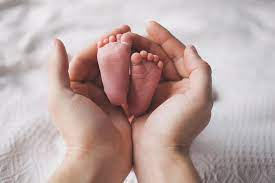Attention-Deficit/Hyperactivity Disorder
- Kaushik Annamraju

- Oct 24, 2022
- 2 min read
ADHD is a chronic illness that affects millions of youngsters and frequently persists throughout life. ADHD is characterized by a number of chronic issues, including trouble maintaining focus, hyperactivity, and impulsive conduct. Children with ADHD could battle with low self-esteem, miscommunication, and poor academic achievement. ADHD is an important illness and this article will describe the symptoms and treatment of ADHD.

Symptoms of ADHD
ADHD is one of the most prevalent pediatric neurodevelopmental diseases. It is typically diagnosed in childhood and might extend into maturity. Children with ADHD may have difficulty paying attention, restraining impulsive actions (doing without considering the outcome), or being extremely active. There are two forms of ADHD, depending on which symptoms are the most severe in the individual. The first type of ADHD is known as Predominantly Inattentive Presentation. Individuals with this type of ADHD find it difficult to coordinate or perform a task, focus on details, or follow orders or dialogue. They get easily confused or forget ordinary routine things. The second type of ADHD is known as Predominantly Hyperactive-Impulsive Presentation. The individual afflicted with this type of ADHD fidgets and speaks a lot. It is difficult for them to remain still for an extended period of time. Smaller children may continually run, jump, or climb. The person is restless and struggles with impulsivity. Someone who is impulsive may frequently interrupt others, seize items from others, or talk at inappropriate times. It is difficult for the individual to wait their turn or listen to orders. People who are impulsive may have more accidents and injuries than others.
Treatment/Limiting symptoms
ADHD is usually best treated with a mix of behavior therapy and medication. Behavior therapy, particularly parent training, is suggested as the first line of treatment for preschool-aged children (ages 4-5) with ADHD before medication is considered. What works best for the child and family may vary. Close monitoring, follow-ups, and making modifications as needed are all part of good treatment regimens. A healthy lifestyle, in combination to behavioral treatment and medication, can help the person manage with ADHD symptoms. Some suggestions include consuming enough fruits, vegetables, and whole grains, Participating in regular physical activity in accordance with age, Limiting daily screen time from TVs, computers, phones, and other electronic devices, etc.
Conclusion
In conclusion, ADHD is a neurodegenerative disease that affects millions of kids and adults around the world. Although it isn’t life threatening, it can ruin social interactions and a person's ability to do basic work if not recognized and treated. This article was written to shed some light on the topic and help others understand more about it.



Comments